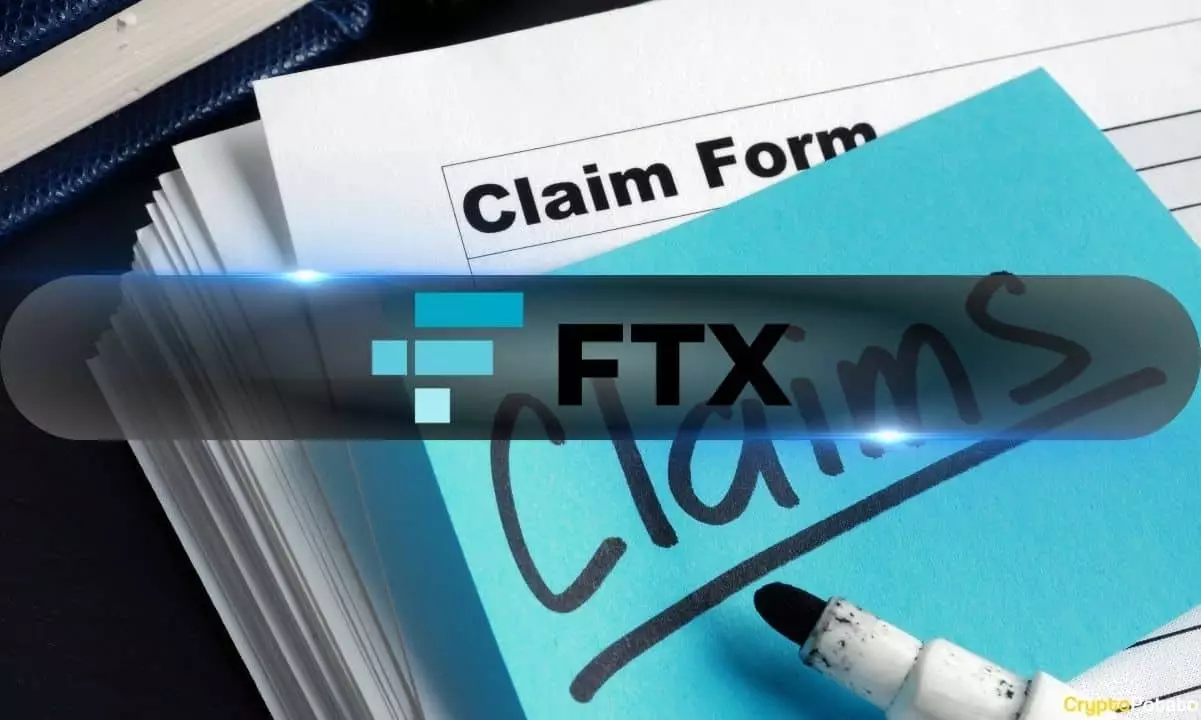The downfall of FTX—a cryptocurrency exchange that once stood at the pinnacle of the digital finance world—serves as a sobering reminder of the volatility and risks deeply embedded in the world of crypto. As the FTX Recovery Trust gears up to distribute over $5 billion to creditors starting May 30, many stakeholders are left pondering the implications of this reimbursement process. It’s crucial to delve into the complexities of this recovery effort, particularly the stark realities it reveals about financial management, investor sentiment, and the inherent unpredictability of emerging financial technologies.
Class Warfare in the Distribution Model
While the announcement of $5 billion in recovery payments might seem like a positive pivot on the surface, it’s essential to dissect the very structure of these distributions. Creditors have been segregated into various “convenience classes,” each with differing payout rates—a move that not only complicates the reimbursement process but also introduces an unsettling element of class warfare among stakeholders. Class 5A will see a robust 72% distribution, whereas Class 5B will only be compensated at 54%. This sort of prioritization raises questions about fairness and equity, leaving many creditors feeling as if they’ve been relegated to the sidelines based on their initial investments or type of claim.
The overarching theme here is one of favoritism. Are creditors with more sophisticated claims unjustly benefitting, while smaller creditors bear the brunt of unfavorable distribution terms? This division risks fostering resentment, and ultimately, that could manifest in legal challenges—as has already transpired with the lawsuits against NFT Stars Limited and Delysium. The operational strategies orchestrated by the FTX Recovery Trust might be an effort to optimize payout, but they open Pandora’s box when it comes to stakeholder trust—an essential commodity in any financial venture.
Cash or Crypto: A Risky Trade-off
The distribution methods are equally dubious, with creditors given a choice between receiving funds directly from the bankrupt exchange or through designated service providers like Bitgo or Kraken. This choice carries ramifications that should give every creditor pause. Opting for a Distribution Service Provider means surrendering the right to direct compensation from FTX. Is this really a fair trade-off for the speedier restitution of funds? The answer is complex; while prompt payments are undoubtedly appealing, the underlying risk of these third-party services could undermine the very aim of the recovery—providing reliable access to funds.
Moreover, the decision to calculate reimbursements based on crypto values at the time of the bankruptcy filing rather than current market values has drawn fierce criticism. This approach is not only misguided but also disingenuous. The volatility inherent in cryptocurrency prices could lead to substantial financial losses for creditors who might now receive significantly less than their original investment. Is it not the fiduciary duty of the recovery team to ensure their stakeholders receive fair compensation reflective of today’s market conditions, rather than retroactive valuations?
The Illusion of Progress: Success or Stalling?
John J. Ray III’s announcements regarding the distributions may sound optimistic. However, while calling it “an important milestone” might create the illusion of systemic progress, one cannot overlook the numerous complexities and hurdles that remain. The recovery process, though commendable in its ambition, appears more of a logistical nightmare veiled in bureaucratic jargon than the efficient asset reclamation it purports to be. With over 11.4 billion dollars still earmarked for creditor repayments, are we to view this endeavor as a triumph or simply a diversion masking the underlying chaos?
The fact remains that creditors are now in a state of limbo—awaiting distributions, questioning the fairness of their classifications, and pondering the sufficiency of restitution. For an industry that prides itself on transparency and innovation, the FTX recovery model seems to fall short on both counts, raising concerns about whether it’s a proactive plan or merely a band-aid fix for a much deeper issue in trust and credibility.
The Road Ahead: A Cautionary Tale
Ultimately, the recovery saga is an illustration of the broader challenges present at the intersection of traditional finance and cutting-edge technology. As more individuals venture into this space, the importance of trust, clear communication, and equitable financial practices becomes undeniable. The FTX debacle should act as a cautionary tale for emerging players and investors alike, emphasizing that innovation must be paired with responsibility.
Therein lies a prevailing question—how can the principles of financial equity be reinforced in such an unpredictable landscape? As we move forward, the need for a robust regulatory framework that adapts to the nuance of cryptocurrency could not be more pressing. For now, the FTX saga continues, revealing discomforting truths about the promises and pitfalls of the digital age.
















Leave a Reply